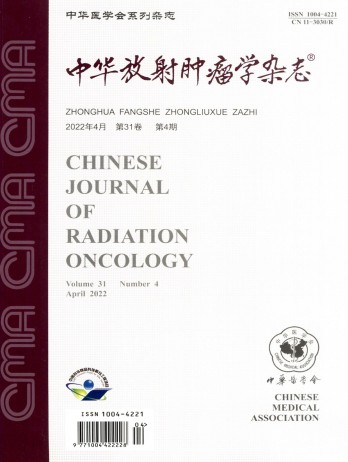The value of plasma EBV DNA in monitoring the therapeutic effect of nasopharyngeal carcinoma
引用次数: 1
Abstract
Objective To investigate the clinical value of plasma EBV DNA in monitoring clinical efficacy in the treatment of nasopharyngeal carcinoma (NPC). Methods Clinical data of 799 patients initially diagnosed with NPC treated with radical intensity-modulated radiotherapy (IMRT) in our hospital from 2016 to 2017 were analyzed retrospectively. Prior to treatment, the correlation between plasma EBV DNA, clinical stage and tumor progression was analyzed. The relationship between EBV DNA and tumor progression was analyzed after radiotherapy and during follow-up. Results Before IMRT, the level of EBV DNA was positively correlated with both clinical stage and tumor progression (both P<0.001). At 6 to 8 weeks after IMRT, 19(2.3%) patients positive for plasma EBV DNA obtained the worst prognosis and 14 cases had tumor progression. At 6-8 weeks after IMRT, 9 patients were negative for EBV DNA and 3 cases had tumor progression. The tumor progression rate of patients with undetectable plasma EBV DNA at the end of IMRT was only 8.3%(64/772), and the progression-free survival rate significantly differed among three groups (all P<0.05). The sensitivity, specificity and accuracy rates of persistent positive plasma EBV DNA during follow-up were calculated as 77.6%, 100% and 98.1%, respectively. Conclusions The level of plasma EBV DNA in patients with NPC is correlated with tumor bearing and tumor progression prior to IMRT. At 6-8 weeks after IMRT, patients who are persistently positive for EBV DNA obtain the worst prognosis and should be given with appropriate adjuvant therapy. The correlation between persistent positive plasma EBV DNA during follow up and tumor progression yields a high accuracy rate, indicating that plasma EBV DNA is a reliable biomarker for monitoring the clinical efficacy after radical treatment for NPC patients. Key words: Nasopharyngeal neoplasm/intensity-modulated radiotherapy; EBV; DNA; Monitoring血浆EBV DNA检测在鼻咽癌治疗效果监测中的价值
目的探讨血浆EB病毒DNA检测在鼻咽癌治疗中的临床价值。方法回顾性分析2016年至2017年我院799例初诊为鼻咽癌患者接受根治性调强放疗(IMRT)的临床资料。治疗前,分析血浆EB病毒DNA、临床分期和肿瘤进展之间的相关性。分析放疗后和随访期间EBV DNA与肿瘤进展的关系。结果IMRT前,EBV DNA水平与临床分期和肿瘤进展呈正相关(均P<0.001),IMRT后6~8周,19例(2.3%)血浆EBV DNA阳性患者预后最差,14例肿瘤进展。IMRT后6-8周,9名患者EBV DNA呈阴性,3名患者出现肿瘤进展。IMRT结束时血浆EBV DNA检测不到的患者的肿瘤进展率仅为8.3%(64/772),三组患者的无进展生存率差异显著(均P<0.05)。结论鼻咽癌患者血浆EBV DNA水平与IMRT前肿瘤的发生、发展有关。IMRT后6-8周,EBV DNA持续阳性的患者预后最差,应给予适当的辅助治疗。随访期间持续阳性的血浆EBV DNA与肿瘤进展之间的相关性产生了高准确率,表明血浆EBV脱氧核糖核酸是监测鼻咽癌患者根治性治疗后临床疗效的可靠生物标志物。关键词:鼻咽癌/调强放疗;EBV;DNA;监控
本文章由计算机程序翻译,如有差异,请以英文原文为准。
求助全文
约1分钟内获得全文
求助全文
来源期刊
自引率
0.00%
发文量
6375
期刊介绍:
The Chinese Journal of Radiation Oncology is a national academic journal sponsored by the Chinese Medical Association. It was founded in 1992 and the title was written by Chen Minzhang, the former Minister of Health. Its predecessor was the Chinese Journal of Radiation Oncology, which was founded in 1987. The journal is an authoritative journal in the field of radiation oncology in my country. It focuses on clinical tumor radiotherapy, tumor radiation physics, tumor radiation biology, and thermal therapy. Its main readers are middle and senior clinical doctors and scientific researchers. It is now a monthly journal with a large 16-page format and 80 pages of text. For many years, it has adhered to the principle of combining theory with practice and combining improvement with popularization. It now has columns such as monographs, head and neck tumors (monographs), chest tumors (monographs), abdominal tumors (monographs), physics, technology, biology (monographs), reviews, and investigations and research.

 求助内容:
求助内容: 应助结果提醒方式:
应助结果提醒方式:


